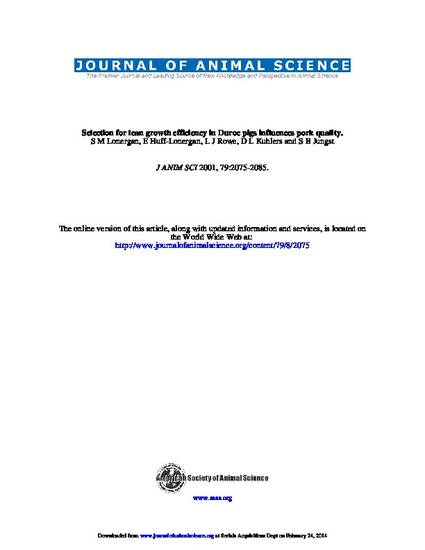
A unique line of Duroc pigs was established by intensive selection for increased lean growth efficiency. The objective of this study was to determine the influence of this selection strategy on fresh pork quality traits. Two lines of Duroc pigs originating from the same foundation herd were evaluated. One line was selected for lean growth efficiency over five generations (Select line), and the other was a contemporary line maintained from the foundation herd (Control line). All pigs in the trial tested negative for the halothane gene. Selection for lean growth efficiency resulted in improved lean gain, carcass lean, increased loin eye area, and less overall carcass fat. The Select line had significantly lower subjective firmness scores in longissimus and significantly greater amounts of moisture and protein lost as measurable drip in longissimus, semimembranosus, and semitendinosus. There were no differences in subjective color scores or in Hunter L, a, and b values between lines. No selection line differences were observed in glycolytic potential or ultimate pH. The longissimus and the semitendinosus exhibited significantly lower early postmortem pH values in Select line pigs. Warner-Bratzler shear values were higher for Select line longissimus chops. Degradation of troponin-T was decreased in the Select line longissimus samples. This result suggests that reduced degradation of myofibrillar proteins may be associated with increased moisture and protein lost during storage. This research points out that elimination of the halothane gene will solve some but not all of the genetically influenced pork quality problems faced by the industry. The Select line of pigs appears to be more prone to producing pork that is soft and exudative, indicating a link between soft and exudative pork and some genetic selection strategies may exist. Therefore, it appears that selection for some economically important traits, such as feed efficiency or increased lean growth in the absence of the halothane gene, may compromise pork quality.
Available at: http://works.bepress.com/elisabeth_huff-lonergan/57/

This article is from Journal of Animal Science 79* (2001): 2075–2085. Posted with permission.